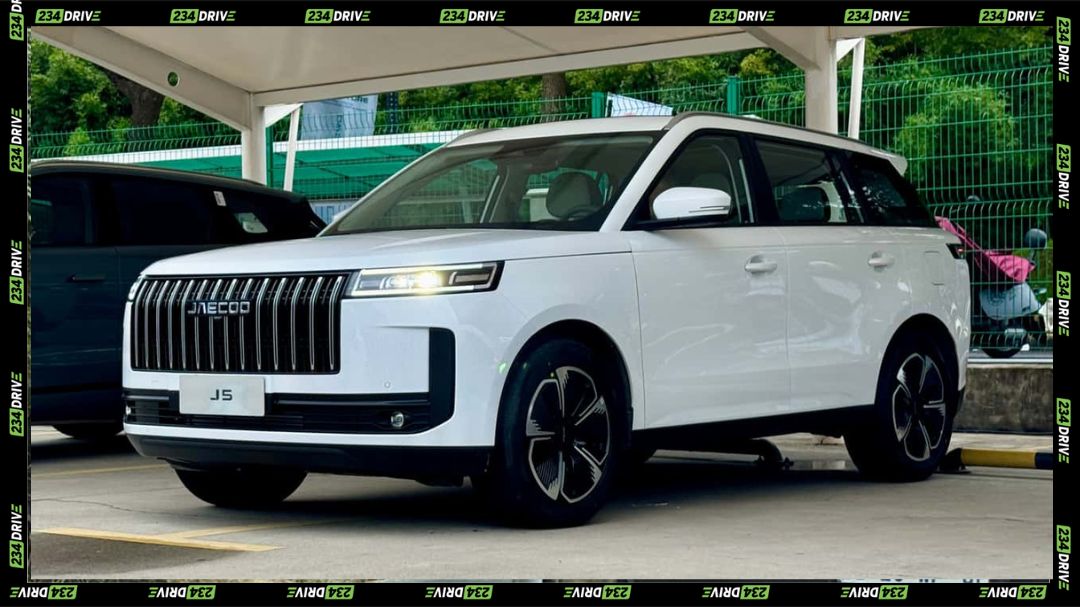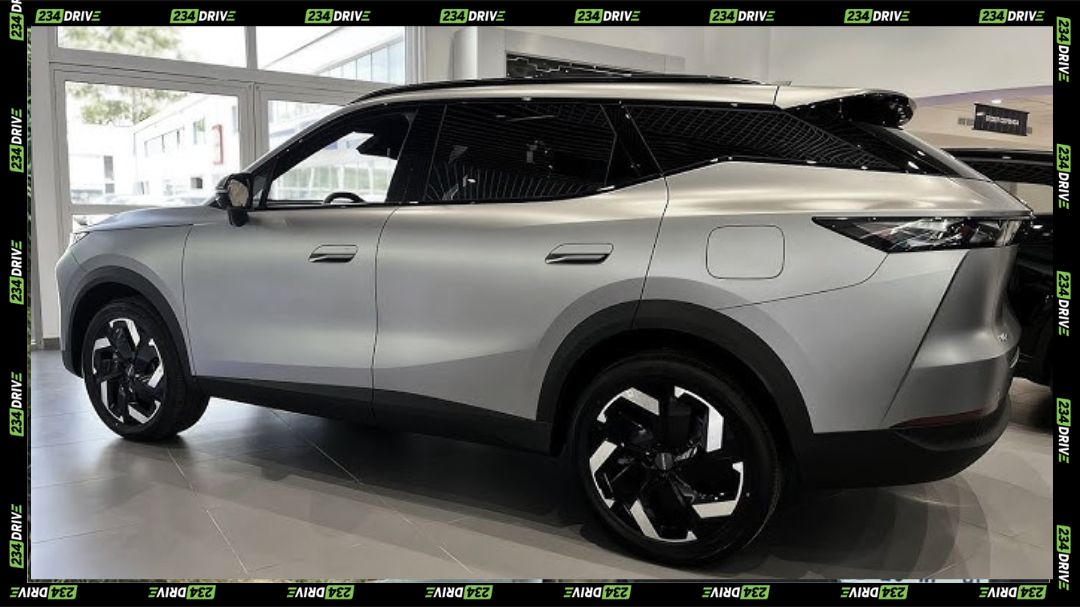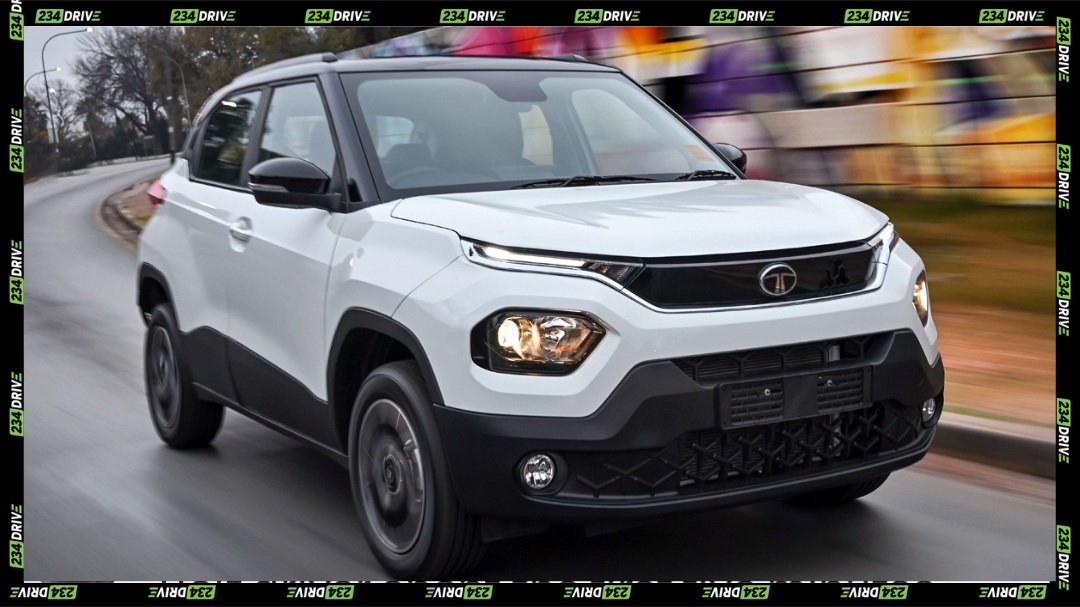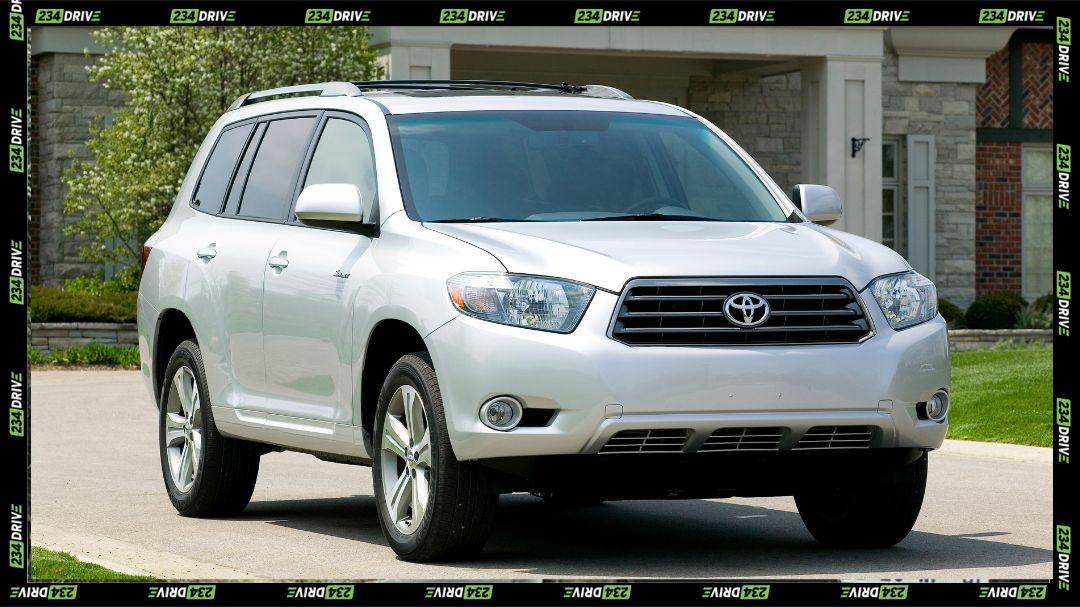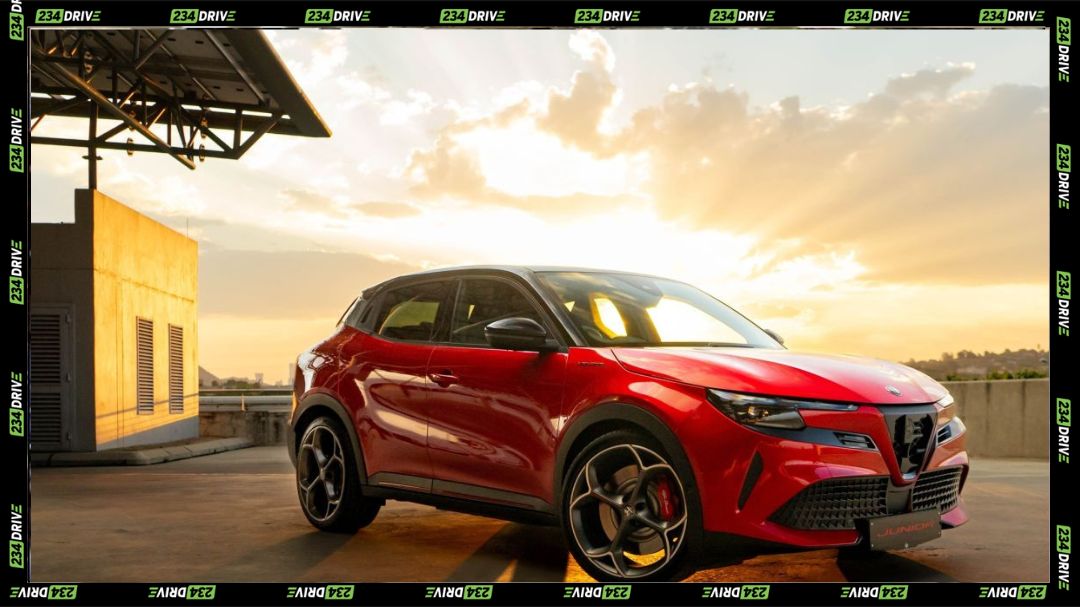The 2013 Honda Accord marked the launch of the ninth generation of Honda’s successful midsize sedan and coupe lineup. Positioned as one of the most trusted names in family-friendly transport, the Accord built on a strong reputation for reliability, affordability, and everyday practicality. Buyers had options ranging from the efficient four-cylinder to the powerful V6, across trims like LX, Sport, EX, EX-L, and Touring. With this model, Honda aimed to balance style, performance, and comfort while addressing the needs of families and commuters alike.
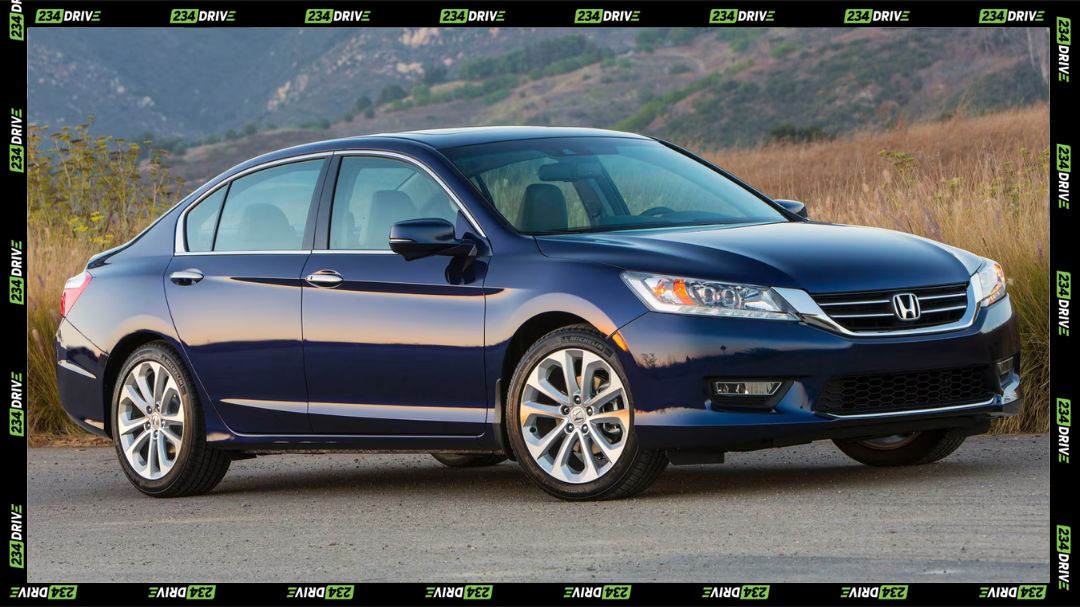
Over the years, the 2013 Accord has drawn attention not only for its spacious cabin and responsive driving dynamics but also for several recalls involving key safety components. This review provides a detailed breakdown of the vehicle’s recalls, interior and exterior features, performance highlights, and how it compares with rivals in its class. It also evaluates the ownership experience in real-world conditions, particularly in regions where climate and infrastructure play an important role in vehicle longevity.
Recalls Overview
The 2013 Honda Accord has been linked to multiple recalls, some extending over time and affecting specific regions. These recalls primarily involve the driveshaft, fuel system, and airbags, with potential safety concerns ranging from engine stalling to loss of power.
According to the National Highway Traffic Safety Administration (NHTSA), there have been at least five major recalls for the 2013 Accord. A notable issue is the driveshaft corrosion in salt-belt states, where exposure to road salt accelerates wear and could lead to failure. Additional recalls cover fuel tank leaks, defective fuel pumps that might cause stalling, and airbag inflator ruptures linked to the Takata recall.
- 25V422 (Honda OM2) — June 2025
This recall involves the driveshaft, where lubricant degradation can lead to corrosion in salt-belt states. A total of 65,115 units are affected. The consequence is a risk of power loss or vehicle roll-away. The remedy is a dealer replacement of the driveshaft. - 13V297 (Honda JA9) — August 2013
This recall covers the fuel tank, which may leak due to improper sealing. A total of 1,659 units are affected. The consequence is a fire hazard or emissions failure. The remedy is a replacement of the fuel tank and sealing components. - 20V769 — December 2020
This recall applies to the driveshaft and represents an expansion of an earlier recall for CVT models. The number of affected units varies. The consequence is corrosion and the risk of failure. The remedy includes either a driveshaft replacement or a software update. - 23V858 (KGC/KGD) — 2023–2024
This recall concerns the fuel pump located inside the tank, which may fail. More than 3 million vehicles are affected. The consequence is the potential for engine stall. The remedy is the replacement of the fuel pump. - 16V346 (Takata) — 2016 onward
This recall involves the airbags, which carry the risk of inflator rupture. Millions of vehicles are affected. The consequence is potential injury from metal fragments. The remedy is a free airbag replacement.
Interior Features
The 2013 Accord was designed with space and usability in mind. Offering up to 103 cubic feet of passenger volume, it ranks among the most spacious in its class. The front seats deliver 42.5 inches of legroom, while rear passengers enjoy 38.5 inches—ideal for families. Entry trims come with cloth upholstery in neutral tones, whereas upper trims like EX-L and Touring offer leather, heated seats, and an upgraded infotainment system.
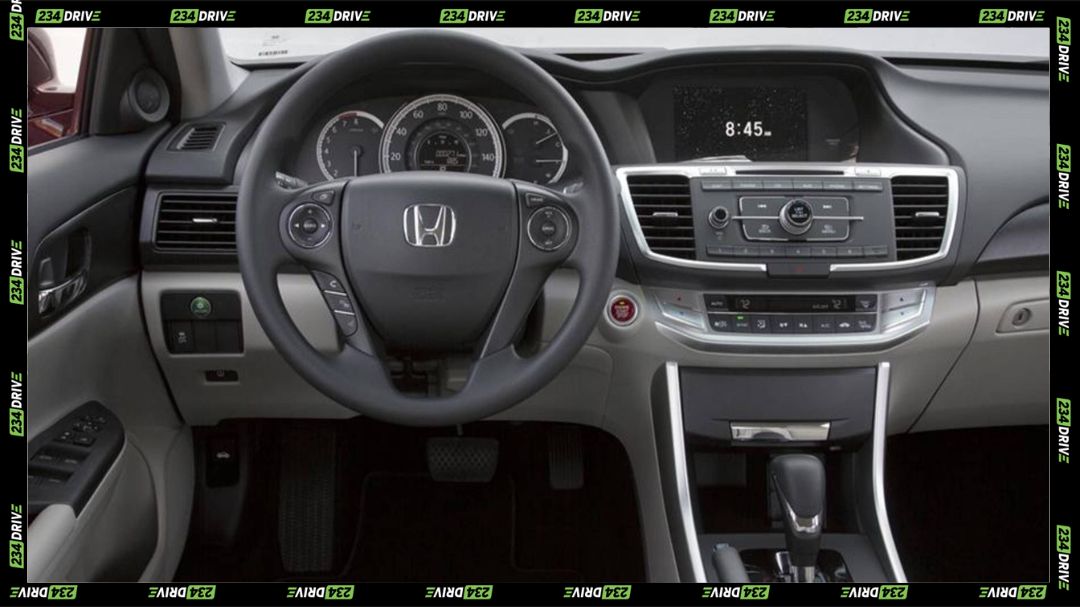
Technology includes an 8-inch i-MID display, Bluetooth HandsFreeLink, a rearview camera, and available navigation on higher trims. Touring models add a 360-watt premium audio setup with seven speakers and subwoofer, dual-zone climate control, and Honda’s Eco Assist system. While the interior is generally praised for comfort, reviews highlight average material quality and noise intrusion compared to rivals like the Toyota Camry.
Exterior Design
On the outside, the 2013 Accord sports a sleek, aerodynamic profile with sculpted sheetmetal and chrome accents. Its dimensions—191.4 inches in length, 72.8 inches in width, and 57.7 inches in height—strike a balance between road presence and manoeuvrability. Wheel options range from 16-inch alloys on the LX to 18-inch on the Sport trim, while projector-beam headlights and LED lighting on upper trims add a modern look.
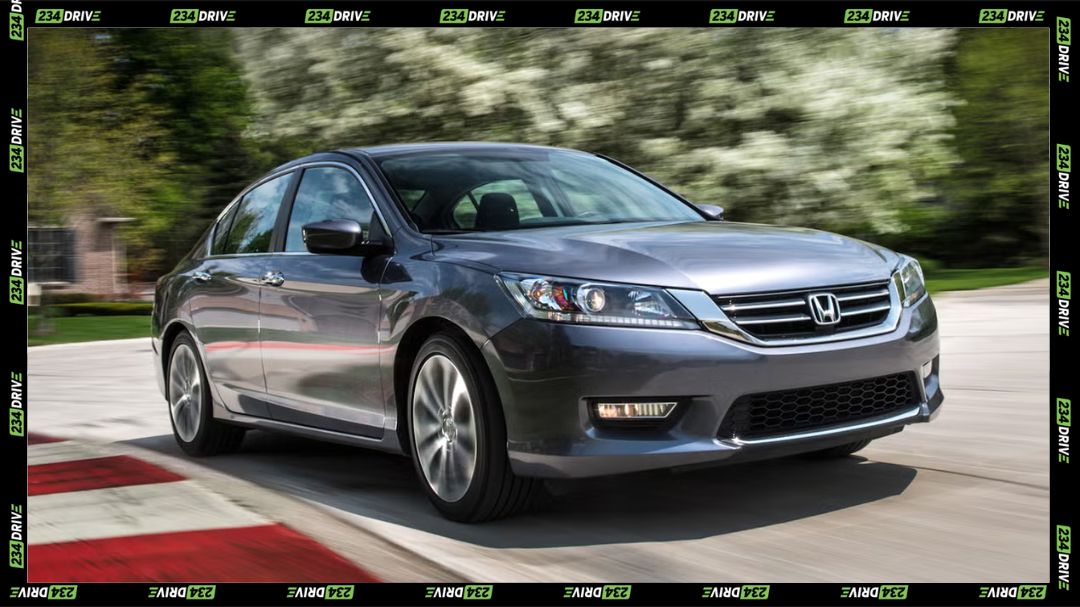
Coupe variants adopt a sportier stance, with shorter proportions and a two-door design appealing to younger buyers. Sedans dominate sales due to practicality, but both versions maintain Honda’s emphasis on fuel efficiency with a low drag coefficient. Optional features such as a moonroof and fog lights further enhance styling.
Performance and Driving Dynamics
Performance choices include a 2.4-litre four-cylinder producing 185 horsepower and 181 lb-ft of torque, or a 3.5-litre V6 with 278 horsepower and 252 lb-ft. Transmission options are diverse: a six-speed manual, continuously variable transmission (CVT), or six-speed automatic depending on trim and engine.
Fuel efficiency is a key strength. Four-cylinder CVT models achieve up to 27/36 mpg city/highway, while V6 sedans deliver around 21/34 mpg. The V6 accelerates from 0-60 mph in just 5.6 seconds, making it one of the quickest in its segment at the time. Handling is composed with precise steering, while suspension design ensures a comfortable ride. However, common issues like catalytic converter wear and starter problems may appear in higher-mileage vehicles.
Ownership in Real-World Conditions
In regions with harsh winters, driveshaft recalls underline the importance of maintenance in salt-belt states. Owners in warmer climates may find the Accord more resilient. With a 17.2-gallon fuel tank supporting over 500 miles of highway range, it proves practical for long commutes and road trips. Prestige plays a role too—the Accord retains high resale value in many markets, cementing its appeal among both private owners and fleet buyers.
Maintenance costs are generally affordable, supported by Honda’s widespread service network. Availability of spare parts and a reputation for long-term durability further make it a practical choice. However, road noise and modest interior materials slightly reduce its premium appeal compared to rivals.
Comparison with Rivals
Against competitors like the Toyota Camry, Nissan Altima, and Ford Fusion, the 2013 Accord stands out for performance and interior space. While the Camry edges ahead in noise isolation and refinement, the Accord offers a more engaging driving experience, especially with the V6 option. The Altima competes strongly with its fuel efficiency but lacks Honda’s resale value.
In terms of pricing, the Accord held strong residuals, making it one of the better long-term investments in the midsize segment. Maintenance costs remain lower than Ford Fusion and close to Toyota Camry, thanks to Honda’s simpler engineering and strong dealer presence. Durability remains a key advantage, with many Accords reliably crossing the 200,000-mile mark with proper care.
Conclusion
The 2013 Honda Accord combines practicality, efficiency, and performance in a package that remains relevant years after launch. While owners must pay attention to recalls and age-related wear, the model continues to deliver a spacious interior, competitive fuel economy, and strong driving dynamics. Its high resale value and broad service support further solidify its position as a dependable midsize sedan or coupe.
For prospective buyers, checking recall completion is essential, but once addressed, the 2013 Accord offers an ownership experience that balances comfort, reliability, and performance.
What are your thoughts on the 2013 Honda Accord—does it still hold its place as one of the best in its class? Share your experience below.


